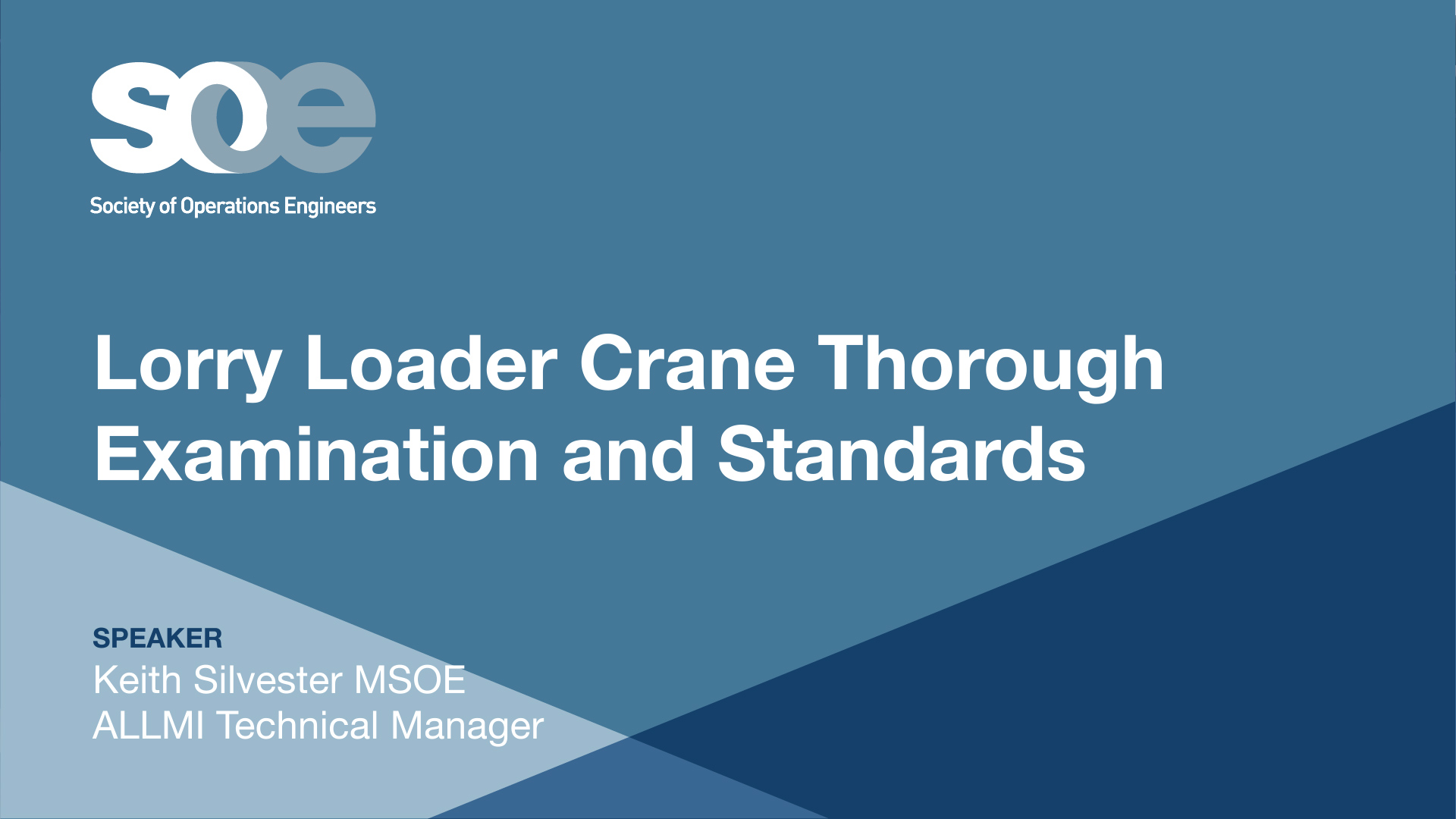The safety, reliability, and performance of lorry loader cranes are undergoing major improvements thanks to updated design requirements, new regulatory changes, and more robust safety and performance standards. These developments are reshaping how operators, manufacturers, and inspectors approach the use, maintenance, and thorough examination of this essential lifting equipment.

A recent webinar hosted by BES and presented by The Association of Lorry Loader Manufacturers and Importers (ALLMI) Technical Manager Keith Silvester MSOE explored what these updates mean for operators, manufacturers, and inspection bodies across the UK and EU.
ALLMI promotes the safe use of lorry loaders, is involved in the formulation of legislation and standards affecting the industry’s interests, promote compliance with training requirements embodied in current legislation and standards.
Understanding the Shift in Lorry Loader Standards
The standards governing lorry loader cranes are evolving to meet higher safety, reliability, and compliance expectations. Updates to European and UK legislation have improved inspection protocols, clarified design requirements, and established stronger safety measures. These changes aim to protect operators, ensure consistent crane performance, and prevent incidents that could have serious consequences on site.
Key Impacts of Updated Standards
1. Design Requirements
- Modern lorry loader design standards focus on safety, reliability, and adaptability.
- Improved operator safety with features such as platform protection, stabiliser warning systems, and safer remote-control functionality.
- Greater equipment reliability through standardised components and structural integrity checks, including boom connections and subframe strength.
- Adaptability to varied use cases, allowing cranes for timber handling or smaller operations to meet tailored safety and performance requirements without overengineering.
2. Regulatory Changes
- Legislative updates are reshaping inspection and compliance practices.
- Transition to the Machinery Regulation (2027) introduces new obligations, including stricter power line safety requirements and digital record-keeping.
- Updated BS7121 mandates age- and usage-based inspections, requiring operators to track crane history and performance.
- Safety incidents, such as those involving swing-up stabilisers, have driven rapid retrofitting and updates to both design standards and regulations.
3. Safety and Performance Standards
- Safety protocols are now more rigorous, with a focus on preventing accidents before they occur.
- Mandatory overload, stability, and calibration tests ensure cranes are safe under real-world operating conditions.
- Digital inspection tools improve accuracy and reduce human error during testing and reporting.
- Legal frameworks, including LOLER, require defect reporting, fostering transparency and proactive maintenance.
- Industry culture is shifting from reactive problem-solving to preventive safety management, emphasising proper maintenance and the avoidance of deliberate overrides.
Why These Changes Matter
The evolution of lorry loader standards represents a significant shift in the lifting industry. By strengthening design requirements, updating regulatory obligations, and elevating safety and performance standards, operators and manufacturers are better equipped to prevent incidents and maintain equipment reliability. These changes protect operators, improve crane performance, and ensure compliance across the lifecycle of the equipment.
Members can click here to watch the webinar, available for two weeks.

